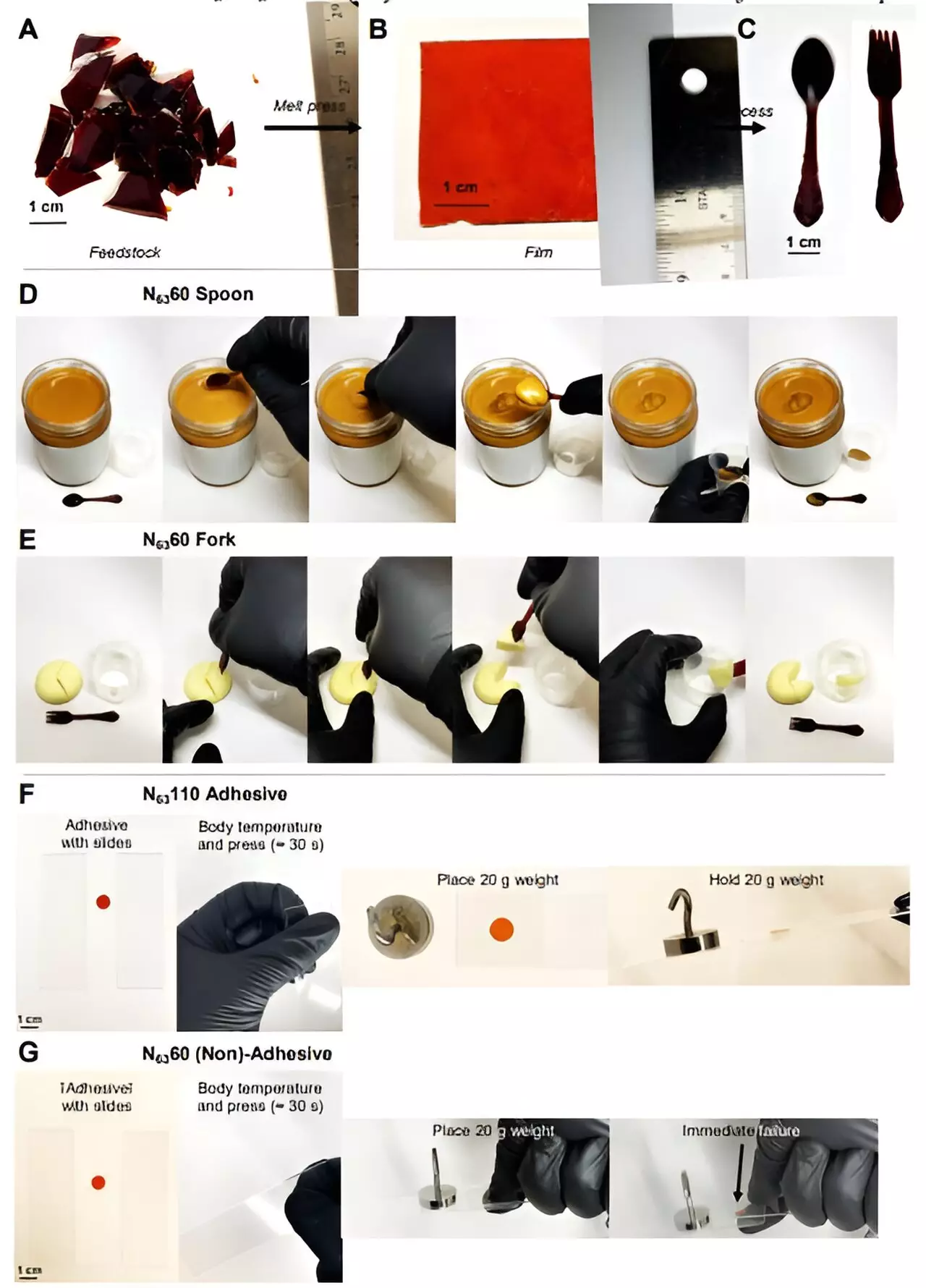Plastic pollution has become a significant concern for our environment and human health as bits of plastic have been found everywhere, from the soil to the oceans and even in our bodies. In an effort to combat this growing issue, a team of molecular engineers from the University of Chicago, in collaboration with researchers from the US DEVCOM Army Research Laboratory, Aberdeen Proving Ground, the National Institutes of Standards and Technology, and the NASA Glenn Research Center, have made a breakthrough with a type of plastic that can be shape-shifted using tempering.
With the harmful effects of plastic on the environment and human health becoming more apparent, scientists have been actively searching for ways to reduce plastic production and waste. The ability to transform plastic into something new after its initial purpose has been exhausted could significantly decrease the amount of plastic that is created, used, and ultimately discarded.
The research team developed a unique type of plastic using a dynamic cross-linked approach based on the reversible addition of thiols to benzalcyanoacetates. This process, known as a “Michael addition,” allowed for the creation of a plastic that could be modified through tempering. By heating the plastic to temperatures between 60°C and 110°C and then quickly chilling it, the researchers were able to shape-shift the material into different objects.
The possibilities of shape-shifting plastic are vast. It has the potential to revolutionize product design and reduce waste by transforming single-use items into multi-purpose tools. For example, a plastic bag used for storing food could be easily converted into a spoon or fork, eliminating the need for additional utensils.
While shape-shifting plastic shows great promise, the research team discovered that there was a limit to the number of times the plastic could be transformed. After seven transformations, the plastic began to degrade. Overcoming this limitation will require further research to develop more durable materials.
The development of shape-shifting plastic marks a significant step towards sustainable and versatile materials. By harnessing the power of tempering, plastic can be transformed into various objects, reducing its environmental impact and optimizing its usability. While there are limitations to its current iteration, these findings open up new possibilities for the future of plastic and its role in a more sustainable world.


Leave a Reply